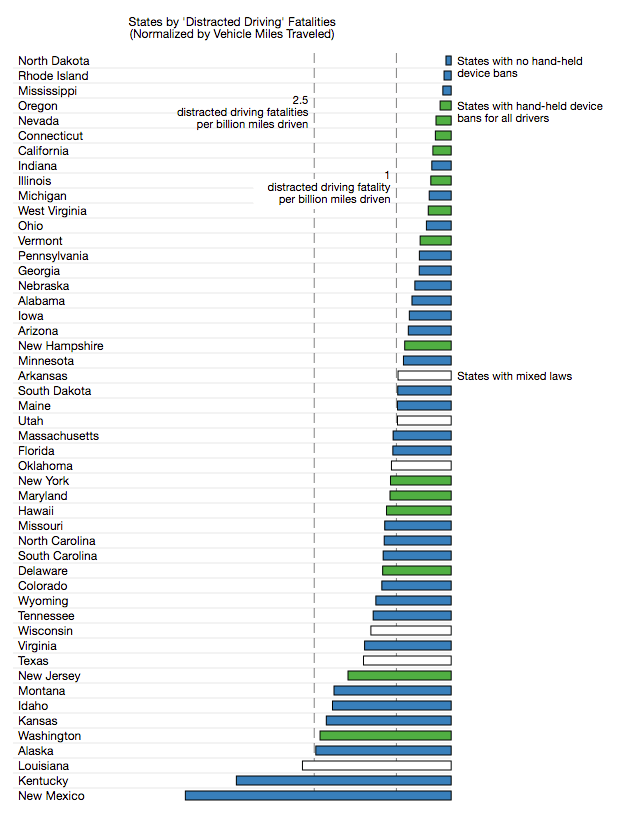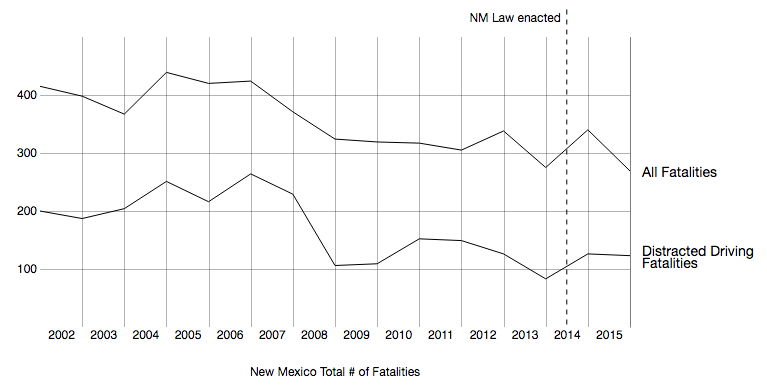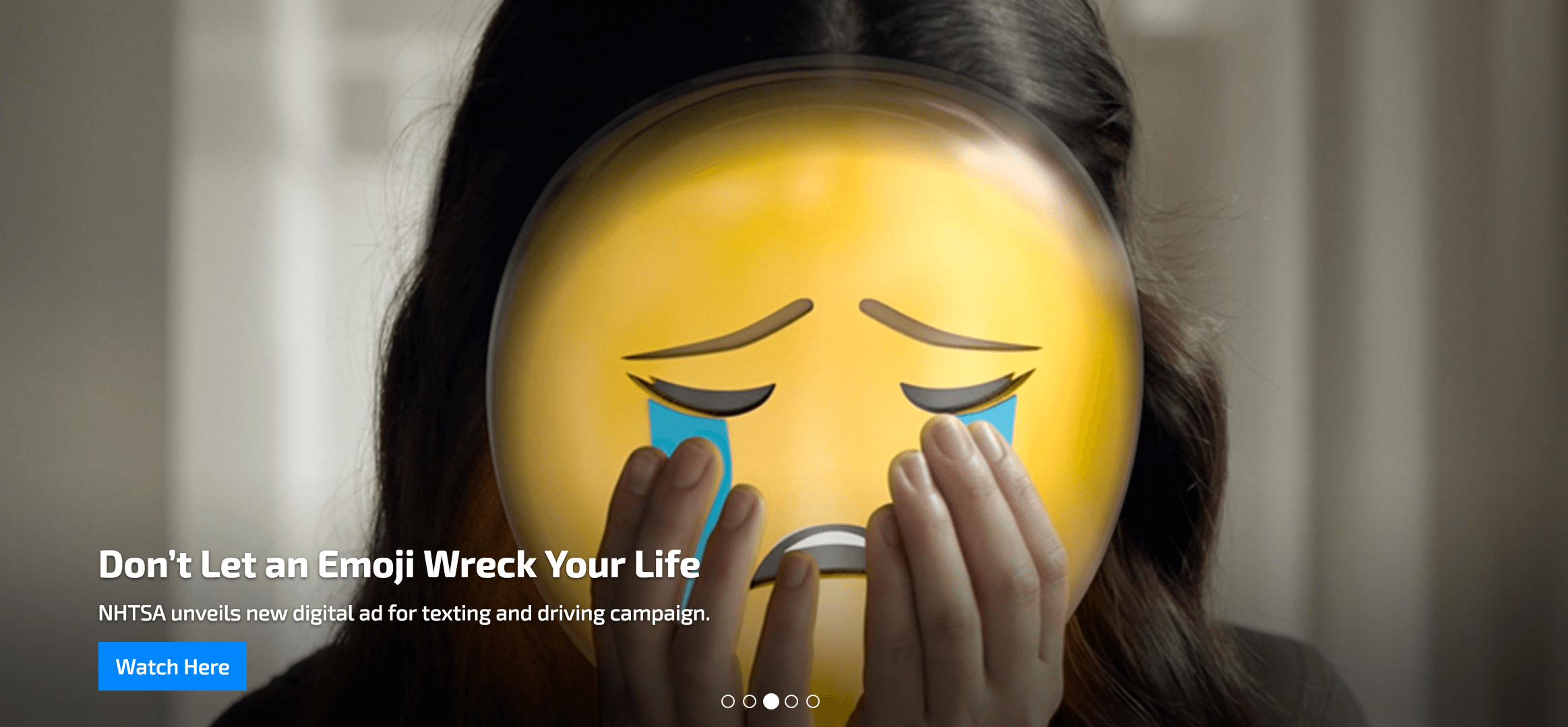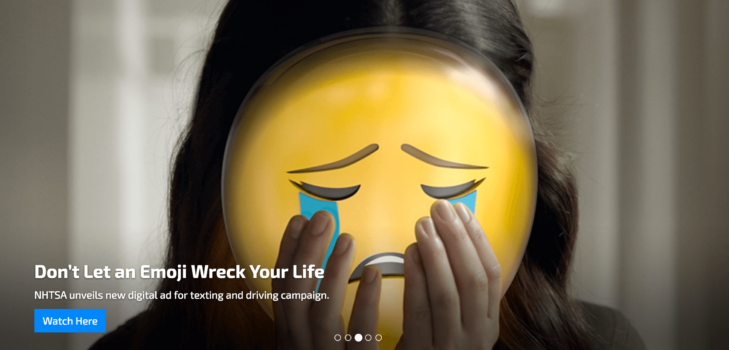Last week, we started to examine the 7.2% increase in traffic fatalities from 2014 to 2015, the reversal of a near decade-long downward trend. We then broke out the data by various accident classifications , such as “speeding” or “driving with a positive BAC,” and identified those classifications that had the greatest increase. One label that showed promise for improvement was “involving a distracted driver.” According to Pew Research , the number of Americans who own a mobile device has pretty consistently risen over the past decade, as has the number of Americans who own a smartphone. Moreover, apps like Pokemon Go have built-in features that incentivize driving while playing, and these types of augmented reality games are only going to become more common.
The National Highway Traffic Safety Association (NHTSA) defines distracted driving as “any activity that could divert a person’s attention away from the primary task of driving.” This includes several activities, from texting while driving, to using one hand to place a call. The Governor’s Highway Safety Administration (GHSA), an organization that “provides leadership and representation for the states and territories to improve traffic safety,” notes that states can even collect data on distracted driving in different ways. While most states split up distracted driving into two or three categories, some states use only one category (and other states use as many as 15 categories!) These categories include not just distraction by technology, but also events such as animals in the vehicle, or the consumption of food & drink. Distracted driving is also said to be under-reported because drivers are less likely to admit to using their phone in the event of a crash.
Because of these discrepancies, it’s important to keep in mind that regulations vary from state to state and policy that successfully reduces accidents in one state may not automatically follow to another state. Still, sharing what works and what doesn’t can be important in saving lives, which is one reason why this data is collected and aggregated. So, which states are succeeding at reducing the number of fatalities caused by distracted driving?

In 2015, New Mexico had one of the highest rates of distracted driving fatalities per mile driven. New Mexico Governor Susana Martinez recognized this even back in 2014, signing a bill that banned texting while driving citing , “Texting while driving is now the leading cause of death for New Mexico’s teen drivers. Most other states have banned the practice of texting while driving.”

Did these laws end up working? Well, maybe. If we look at all crashes (not just fatal ones) in New Mexico from 2005 to 2014, the general trend was downward post-2007, seemingly leveling out during 2014. Unfortunately, data from 2015 on the total number of crashes in New Mexico isn’t available and so we aren’t able to examine whether the bill ended up succeeding in terms of reducing all crashes due to distracted driving.

If we examine only fatalities, we see that while the number of all fatalities decreases in 2015, the 2014 bill doesn’t seem to actually affect distracted driving fatalities. The bill was signed in March and took effect in July, and so there were several months for its effects to be able to propagate. This ambiguous policy impact isn’t limited to New Mexico either. Economists Rahi Abouk and Scott Adams ran a national study where they discovered that “while the effects are strong for the month immediately following ban imposition, accident levels appear to return toward normal levels in about three months.” Still, New Mexico’s decrease in fatalities bucked the national trend by the greatest amount (we’ll talk about which states experienced the largest increase in fatalities in a separate post).

Of course, legislation is only one tactic that can be used to prevent distracted driving. The GHSA notes that (some) states use other tactics such as social media outreach or statewide campaigns. Several states have adopted slogans, which range from the passive Wyoming “The road is no place for distractions” to the more flavorful Missouri “U TXT UR NXT, NO DWT.” States sometimes aim these campaigns at specific demographics, such as teens and young adults, who have higher rates of distracted driving (quite a few states also pass legislation that directly targets young people).
This post is the second in our series on traffic fatalities , inspired by a call to action put out by the Department of Transportation. Watch out for another post highlighting a different aspect of the dataset next week. In the meantime if you have any questions or comments or suggestions you can find me at @JayMahabal or email me at jay@h2oai.







